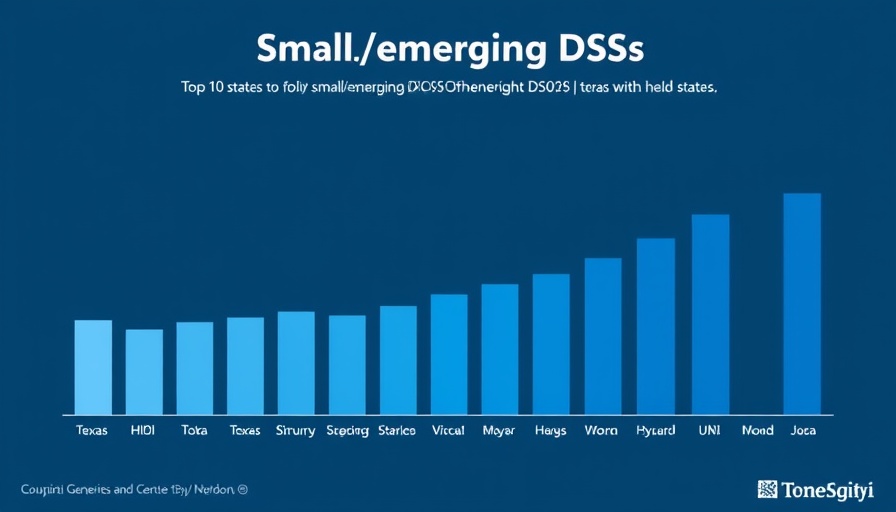
Spotlight on Dental Consolidation Trends
The dental industry is witnessing unprecedented consolidation, particularly driven by the dynamic growth of Dental Support Organizations (DSOs) and group practices. Recent insights from DSO DataCONNECT indicate that California, Texas, and Florida are leading this trend across various tiers of the market, namely Elite, Mid-Market, and Small/Emerging categories. This consolidation is not merely a business trend but signifies a transformative shift in how dental care is delivered to patients across the United States.
Understanding the Dynamics of DSO Growth
In examining the comprehensive landscape of dental practice consolidation, it’s crucial to delve into why these three states dominate the map. California's expansive population and healthcare infrastructure enable a robust environment for DSOs. Texas, with its growing economy and lenient regulatory environment, fosters rapid establishment and expansion of dental practices. Meanwhile, Florida's influx of retirees seeking dental care creates a compelling demand for organized dental services. Together, these states highlight a convergence of factors that facilitate industry growth and innovation.
Implications for Patients and Practices
Consolidation under the DSO model introduces distinct advantages and challenges for both patients and practices. On one hand, patients may benefit from more coordinated care and greater access to affordable treatments. DSOs leverage economies of scale to offer services that could be out of reach for independent practices. Conversely, concerns arise regarding patient care standards and the potential for profit-driven decisions overshadowing patient needs. Critical conversations around these impacts are essential as consolidation progresses.
Future Predictions: What Lies Ahead?
As dental practices continue to consolidate, industry analysts predict several outcomes. Increased collaboration among DSOs might lead to standardized approaches in patient care and treatment protocols. Enhanced technology integration is also anticipated, with a rise in tele-dentistry and electronic health records management. Looking toward the future, it’s clear that the evolution of dental practices in these leading states could set the tone for national trends, impacting how practices respond to patient needs and market demands.
Addressing Counterarguments: Diverse Perspectives on Consolidation
While the benefits of consolidation are widely recognized, counterarguments frequently surface. Critics argue that the emphasis on profitability could detract from high-quality patient care and personalized attention typically found in smaller, independent practices. Additionally, monopolistic tendencies may arise, stifling competition. Addressing these concerns will be crucial as the dental industry seeks to forge a balanced path in its evolution.
Actionable Insights for Dental Professionals
Dental professionals stand at a pivotal junction in this changing landscape. For practices contemplating affiliation with DSOs, key considerations should include understanding the implications on practice culture, patient relations, and operational autonomy. Engaging in strategic partnerships could provide the necessary leverage to enhance practice viability in an increasingly competitive environment. Thus, the decision to consolidate or remain independent demands thorough evaluation of both immediate and long-term effects.
 Add Row
Add Row  Add
Add 




Write A Comment